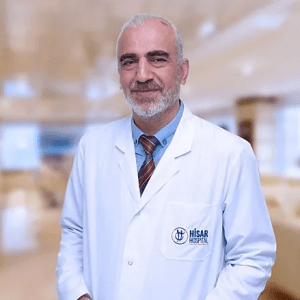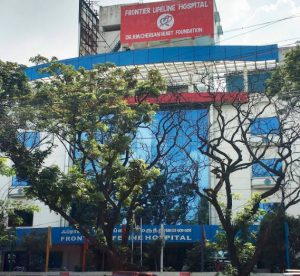Balloon Mitral Valvotomy
A balloon valvotomy is the preferred treatment for mitral valve stenosis. It is a procedure that widens the mitral valve so that blood flows more easily through the heart. A balloon valvotomy is a minimally … Read More
Top Doctors For Balloon Mitral Valvotomy Treatments
Top Hospitals For Balloon Mitral Valvotomy Treatments
Balloon Mitral Valvotomy
- Chordia tendineae, which are tough fibrous strings supporting a parachute.
- Papillary muscles, which are part of the inside walls of the ventricles.
Symptoms
• Shortness of breath, especially with exertion or when you lie down
• Fatigue, especially during increased physical activity
• Swollen feet or legs
• Heart palpitations sensations of a rapid, fluttering heartbeat
• Dizziness or fainting
• Coughing up blood
• Chest discomfort or chest pain
Symptoms Of Mitral Stenosis
The most common symptoms of a stenosis of the mitral valve, include all shortness of breath.
- Fatigue
- Quick weight gain
- Weakness
- Dizziness
- Cough with or without blood
- Respiratory infections
- Swelling in the ankles, feet, and/or abdomen.
- Heart palpitations (irregular heartbeats)
- Chest pain
Causes
Mitral stenosis is mostly caused by rheumatic fever. Rheumatic fever is an inflammation of the joints and the heart, following a respiratory infection with streptococcus.
A streptococcus is a spherical, gram-positive (dark blue or violet) bacterium of the genus Streptococcus. Although commonly found benignly in the human mouth and gut, and though many species are non-pathogenic, other species can cause diseases including strep throat, rheumatic fever, and more serious conditions.
Though many patients diagnosed with mitral stenosis don't recall hearing about the disorder, mitral stenosis mostly develops as a result of rheumatic fever someone had a few years ago. During rheumatic fever, the value becomes inflamed. Over time, the leaflets of the inflamed valve become sticken together and become scarred, thickened, and rigid, thereby limiting its ability to open completely.
Mitral Valve Stenosis Diagnosis
The common tests taken to diagnose the stenosis of the mitral valve include the below:
- Transthoracic echocardiogram : Sound waves are directed at your heart from a transducer held on your chest to produce video images of your heart.
- Transesophageal echocardiogram : To see if your heart is producing blood clots. It uses high-frequency sound waves to examine the structure of your heart.
- Electrocardiogram (ECG) : To measure your heart's electrical activity.
- Chest X-ray
- Cardiac catheterization.
Treatment Of Mitral Valve Stenosis
- Anticoagulants Or Blood Thinners: These reduce the risk of blood clots.
- Beta-blockers: These slow down your heart rate.
- Antiarrhythmics: These treat abdominal heart rhythms.
- Diuretics: These reduce the buildup of fluids through increased urine output.
- Balloon Mitral Valvotomy : A definite treatment of mitral valve stenosis includes percutaneous balloon mitral valvotomy (PBMV).
PERCUTANEOUS BALLOON MITRAL VALVOTOMY PROCEDURES
Before The Procedure,
Tests were done a day before the procedures are:
- Blood test.
- ECG
- Echocardiogram.
Notify your doctor if you are on any blood-thinning medications such as coumadin (warfarin). He or she may prescribe an alternative method for you. If you are diabetic, inform your doctor so he or she can adjust your medications on the day of the test.
You should not eat after midnight, before the day of the procedures. Leave all your valuable items at home before coming for the procedures. Come with your dentures, glasses, and/or a hearing assist device (as applicable). Plan to wear them during the procedures, to aid communication.Tell your doctor if you have any allergies.
During The Procedure,
The procedures are non-surgical and performed in the cardiac catheterization laboratory by a cardiologist. The below are involved in this stage of procedures:
- Long slender tubes (catheters) are inserted through an artery in the groin or arm and guided into the chambers of your heart.
- A tiny hole is created in the walls between the two upper chambers of your heart. This home provided access to the left atrium with a special catheter that has a balloon at the tip (hence, the name of the nonsurgical term: “Balloon Mitral Valvotomy).
- When the tube reaches the narrowed mitral valve, the balloon device located on the top of the catheter is immediately inflated.
- The stenotic (narrowed) valve leaflets are separated and stretched open as the balloon pressure presses against them.
- This process (repeated many times) increases the size of the mitral valve opening and allows more blood to flow from the left atrium into the left ventricle.
RECOVERY TIME
There will be an improvement as per the symptoms of mitral valve stenosis observed before the procedures were conducted, happening between 1 to 3 weeks. Please inform your doctor if there seems to be no good improvement. Sometimes, these symptoms are due to the mitral valve narrowing again (this situation is known as restenosis).
Restenosis might happen some years (about 2–5 years) after the treatment procedures. Symptoms can also reoccur due to the state of other valves, heart, or lungs, especially when they develop long after the valvotomy procedures.
RISKS
Balloon valvotomy is catheter-based, not a surgical procedure, and therefore, has a lower risk of complications and death when compared with an open-heart surgery like a commissurotomy or valve replacement surgery.
It should, however, be noted that a balloon valvotomy does not cure the condition or make the valve normal. It helps the valve perform its functions normally to let the blood flow through the heart. It is the improved blood flow that relieves the symptoms. Blood pressure inside the left atrium reduces and helps also relieves symptoms of lung congestion.
COMPLICATIONS
Complications that happen after a balloon mitral valvotomy include:
- Mitral valve regurgitation.
- A leaking heart condition might happen in 2–10 people out of every 100. In such cases, the heart might be damaged so that it doesn't close normally. This will cause blood to leak backward in the heart. A leaking valve can cause the heart to overwork.
- Restenosis.
- The valve becomes narrow again. Here, valve replacement surgery may be an option, if the condition of your valve does not support another balloon valvotomy.
SURVIVAL RATE
Risk during valvotomy procedures is not common. Serious complications might happen in 1–12 people out of 100. Death from the procedure might likely happen in 1–3 people out of 100. All the same, it is of note that a lot of experience doing balloon valvotomies tends to reduce complication rates and heighten success rates.
FAQ
- Who is the right candidate for balloon valvotomy?
The beneficiaries of percutaneous balloon mitral valvotomy are:
- Patients who have mitral valve stenosis with its symptoms.
- Older patients who have aortic valve stenosis, but are not able to undergo surgery.
- Certain patients with pulmonic valve stenosis.
- Can a mitral valve be repaired without open-heart surgery?
Some heart patients have not yet been able to access the growing trend towards minimally invasive procedures. A new clinical trial makes it a form of mitral valve repair an option without open-heart surgery.
- Is exercise good for mitral valve regurgitation?
Your doctor might recommend at least 2½ hours of moderate-intensity aerobic exercise every week and a limit on the amount of sitting you do. It is important to learn how to cope with stress healthily. It can trigger a heart attack or chest pain in some people.
- If you have mild regurgitation, can it go away?
If you have mitral regurgitation, it is not ever going away. Medications may ease the symptoms, but they can't address the structural problem.
- How serious is mitral valve stenosis?
If left untreated, mitral valve stenosis can result in complications, such as pulmonary hypertension, which condition increases pressure in the arteries that carry blood from your heart to your lungs (pulmonary arteries), causing your heart to work harder. Heart failure may result.



























































































































